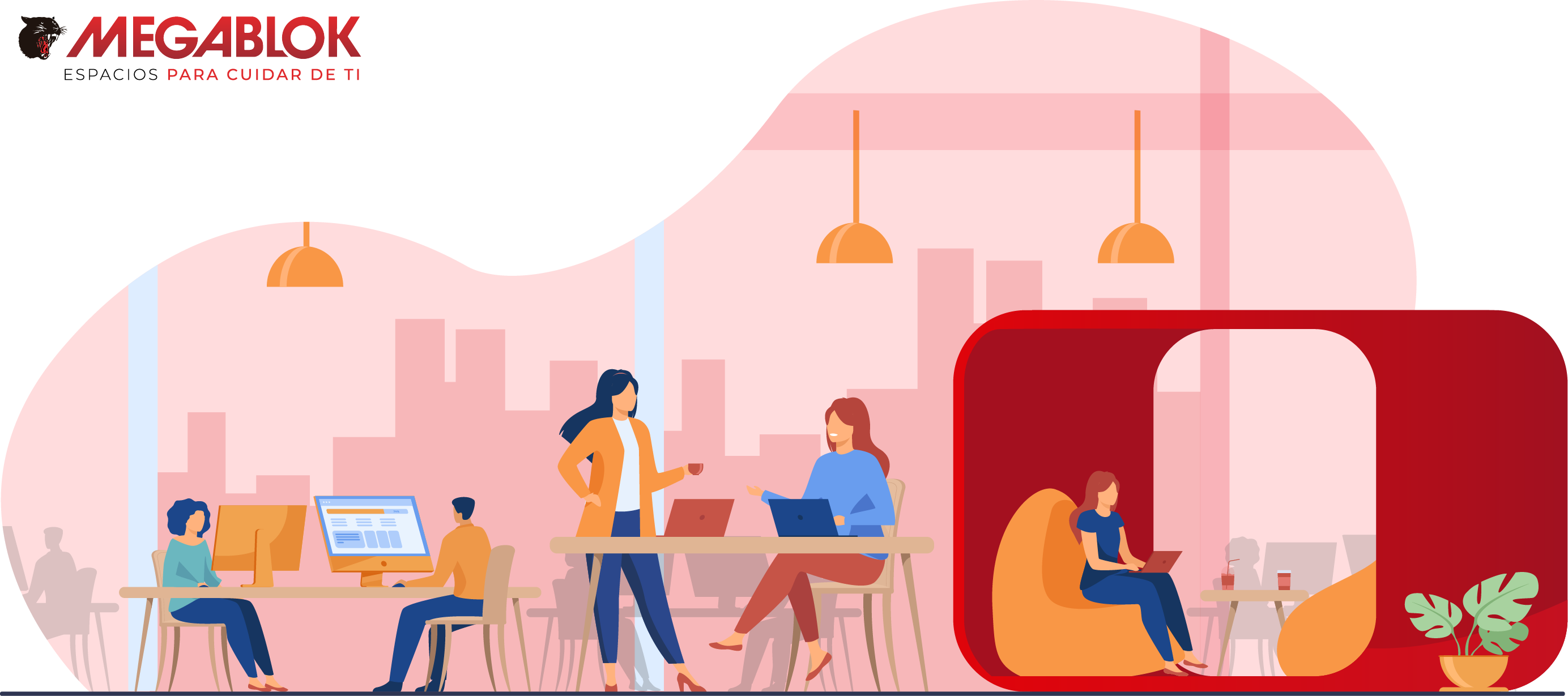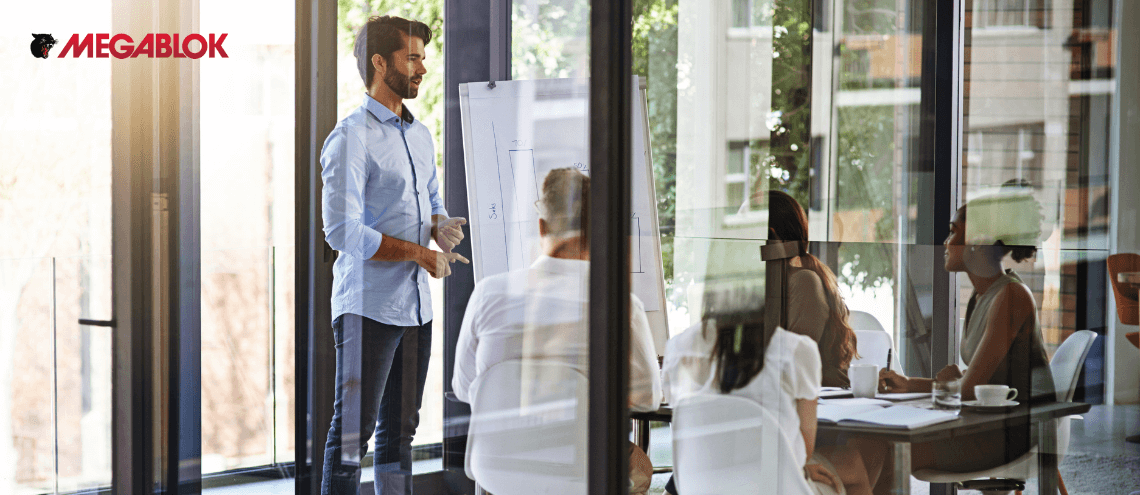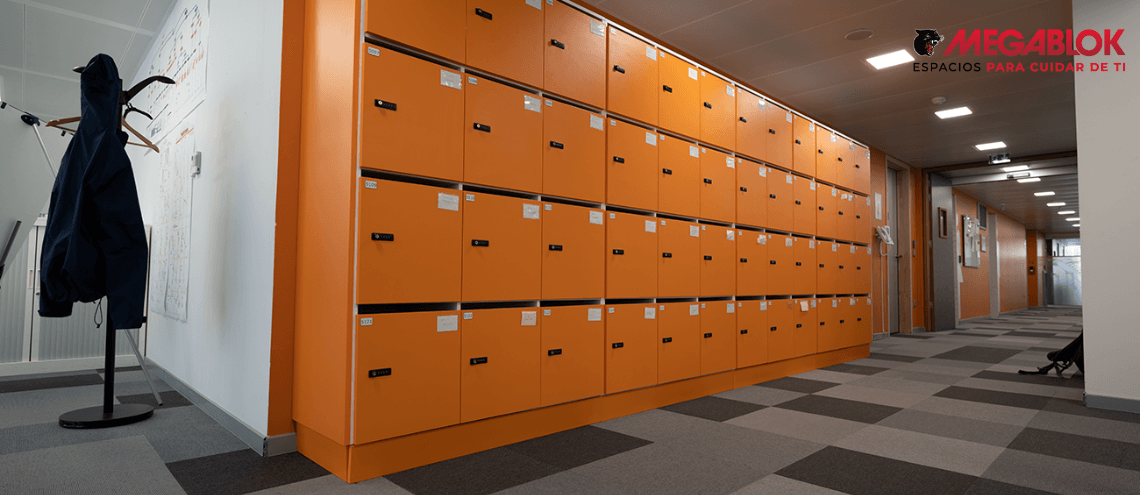Since digitalization began, the world has been changing by leaps and bounds, influencing all the social, economic and political aspects that develop the world. But, in the year 2020 there was a turning point, an event that changed everyone’s life and helped the process, from analog to digital, to finish settling in all aspects.
In this new post of our blog we will talk about the change in the work model. But, above all, how offices and workspaces have adapted to a new way of working.
What is hybrid work?
Hybrid work is a model that offers workers the flexibility to perform their tasks from anywhere (at home, in the office or anywhere in the world). Unlike the well-known telework, this version mixes the presence in the office and remote work (from wherever the worker wants). In this situation, it is the companies and organizations that delimit the hours, or days, of teleworking or on-site.
Employees who are able to opt for a hybrid work model tend to be more satisfied (work and personal) and even more productive than colleagues with less flexible jobs in traditional offices. Flexible work offers employees the opportunity to enjoy a better work-life balance.
This flexible way of working not only offers employees the possibility to work in a way that suits their situations and needs, but also allows companies to reduce costs and get the most out of their office layout by maximizing the available space. Since there will be fewer people in the office at certain times, it will be easier to create common areas where teams can meet and collaborate spontaneously.
What are Open Spaces and how can they be implemented?
The way we understand work has changed dramatically in recent years. Now work teams are more diverse, more united, more collaborative and have more advantages than before. In addition, workspaces are no longer the same, now they seek to create collaborative areas where ideas flow and people contribute their opinion. The latter is called Open Space.
The Open Space methodology, or concept, aims to generate and promote a more collaborative and participatory space among workers in order to improve internal communication, motivate employees and generate more flexible work methodologies based on the achievement of objectives.
Benefits of Open Space offices
Designing an Open Space office, or that the human resources team of a company manages to implement this work methodology, will mean a before and after in the company.
- Space optimization: the work environment is one of the most important aspects, therefore, if we achieve satisfaction with the space, we will help to improve employee engagement. The design of the space and its configuration help work performance. Having a functional work office means gaining useful space with a better distribution and calculation of the office furniture.
- More collaboration between teams: when working in individual spaces and with a certain degree of isolation, communication between teams becomes difficult. Therefore, Open Spaces are perfect work areas to enhance collaboration between the people who make up the company. As a result, discussions result in a better flow of ideas and solutions.
- Increased socialization: offices with Open Space are workplaces with a friendlier and healthier environment, as they allow for dialogue between workers. A company in which employees can perform their tasks in a more relaxed, real and affective environment, significantly enhances the well-being of all of them.
How to make an Open Space?
Implementing the Open Space concept in your office will consist of two processes. The first is the easiest, especially if you have good collaborators to help you make the correct selection and distribution of your space.
When you consider making a change in your offices, the first thing you think about is the arrangement of space and how each team member should have his or her place. But what if they didn’t have a fixed place? What if they could move around at their own convenience?
| Science tells us that the layout of an office will impact not only financial and spatial economics, but also the physical and mental well-being of employees. – Alonso, M.F. |
The key to the Open Space model is to create an open space where the company’s employees can meet in order to generate a more favorable and successful work environment.
- An office to be comfortable: it is important that employees have the necessary space to carry out their work, including the necessary storage spaces; it is advisable to allocate at least 14 m2 for each employee, taking into account the proportional part of the common areas. This distribution of m2 also includes the space dedicated to the storage of documents and necessary materials, such as a phenolic, melamine or metallic locker. Even, if you are looking for something more adapted, you can opt for metal cabinets or cabinets with PVC doors. The aim is to increase productivity while reducing the stress of searching for files throughout the office.
- Provide a functional meeting space: to work in the right environment in an Open Space, tranquility is an essential requirement. It is therefore essential that the offices have areas for group or individual meetings (videoconferences or calls); in this meeting space, favor furniture that matches your ambitions: large tables for group work or signing contracts with clients or comfortable chairs that reflect your seriousness and highlight your brand image and, in short, create a functional space that only looks like you.
- Having the right office furniture: one of the most important points when selecting the furniture for your Open Space office is to prioritize the quality and ergonomics of each piece of furniture. So, once you have thought about the location of each area, now it’s time to spend time choosing the right equipment, according to your needs.

What are flexible offices?
We already know what hybrid work is and what it entails to implement an Open Space in your company. Now, we are going to talk about the new trend that some companies are starting to apply, in order to deal with the empty spaces left by the hybridization of work.
This work organization model has changed the way work offices are perceived, looking for a more flexible way to organize and distribute them according to the number of employees at that moment. Thus, the term: flexible office was born.
Flexible offices are workspaces that offer entities and organizations more capacity to adapt to their rhythms and needs.
Our offices have recently received a number of requests where companies are remodeling their workspaces in order to adapt them to the hybrid teleworking model, seeking to create a workplace that offers employees different areas and ways of working.
How to equip flexible offices?
Office desks
In order for individual or collective work to be carried out, it will be necessary for the offices to have the best possible conditions. And here the desks play a key role.
Flexible office desks should be:
- Functional: that they fulfill the function for which they have been designed, but that they can also support the weight of a computer and have enough space to perform physical and digital tasks. In addition, it will also be ideal that these are foldable for use or storage, depending on the demand of staff.
- Modular: that can be used independently or collectively to work in groups or pairs.
- Mobile: they should be easy to transport and noise and weight should not be an impediment.
Office chairs
The chairs in flexible offices must allow the distribution of employees according to the amount of work attendance at that time. But they must also be easy to store.
- Light and resistant
- Easy to move
- Comfortable
Office warehousing
An organized space is a safe space.
For a good organization of offices, it is necessary to have resources adapted to the space. Therefore, we recommend using storage furniture such as: cabinets, lockers, coat racks, charging stations for devices(charging box) or Open Spaces furniture.
Ideally, the storage of materials should be organized by employee or section. Thus, lockers or storage cabinets should have different modules or compartments. In addition, it is recommended that they have wheels so that they can be easily moved for space reorganization.
Open Space, lockers and cabinets for office use
Closets. This is one of the most common options for customers looking for a simple and practical solution to equip their offices. Two models are available:
- Metal cabinets: they are highly resistant, have a welded structure and do not require assembly.
- Cabinets with PVC shutter: the structure of its body provides strength and the shutter-shaped doors make them easy to use on a daily basis.
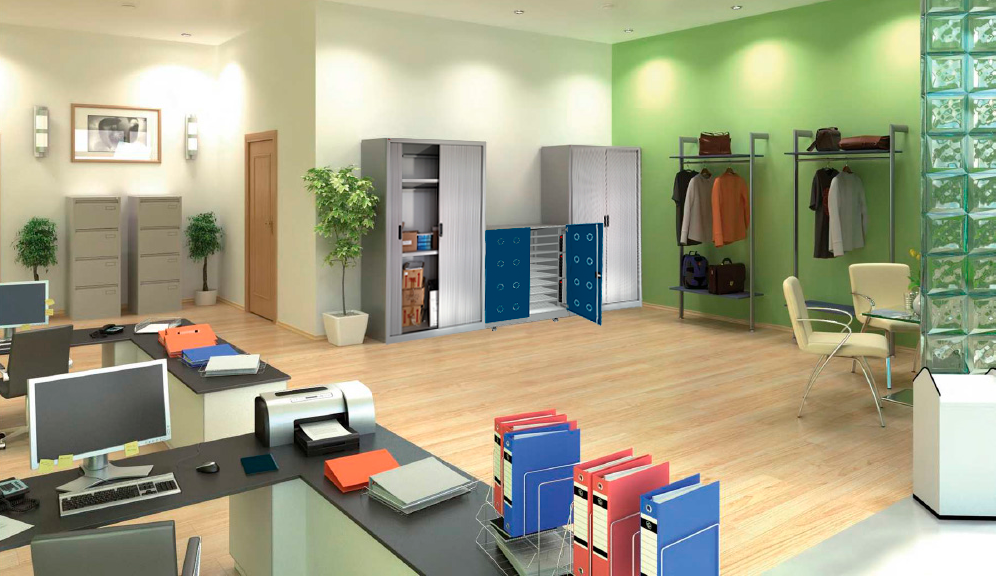
Lockers. The lockers have the advantage that inside you can have hangers or shelves, depending on the use to be given. In addition, if you are looking for an independent space for each employee, this is the best option.
- Phenolic lockers: these lockers are highly resistant to the passage of time and wear and tear, as they are waterproof, fireproof and antibacterial. In addition, they do not require assembly.
- Melamine lockers: its material is perfect for the storage of office material. In addition, they are highly resistant and can be customized.
- Metal lockers: they have a welded structure, which makes them highly resistant and facilitates their installation because they do not require assembly. In addition, as they are made of cold-rolled steel sheet and painted with EPOXI powder paint, they can be easily cleaned.
Charging stations. The hybridization of work and flexibility in the office brings with it some problems that companies must solve to avoid the unnecessary transfer of devices. For this there are systems to host and charge electronic devices in the office while the employee is at home teleworking from another device or on their day off.
- Charging boxes: this solution provides storage and battery charging spaces for cell phones and tablets. They have three different connectors so that any device can be charged.
- Monoblok-E: if you are looking for a hybrid between the traditional locker and electronic lockers, this is the solution you are looking for. The Monoblok-E are lockers with plug and USB cables for charging small devices, but with the advantage that the employee will have his own private storage space.
Open Spaces furniture. It is the new storage furniture solution that we have created for offices. After detecting the space problems that many companies had in their offices, we decided to create a product that would help to improve the organization of their material. For this we have made 3 series:
- Mailbox: this piece of furniture is a hybrid between lockers and mailboxes. It is designed for employees to store their personal materials, while also serving as a place to deposit letters or personal documents.
- Office: this series seeks to offer the same solution as the mailbox, but with a smaller space for correspondence. In addition, they have two doors for full opening.
- Cubic: the cubic model is a more compact locker, which facilitates movement and improves office aesthetics. In addition, it includes the option of integrating a removable coat rack, so that employees can hang their jackets, or it can also be fitted with wheels to move it at the convenience of the space.
Community Locker, the smart locker for companies
The fact that employees have to go to the office is often a problem for the online purchases they make – the delivery person can’t find it at home, there are several delivery attempts, there is more pollution and the employee has less work-life balance – but since there is always a solution, we have found it and we call it Community Locker.
Community Locker’s smart lockers promote work-life balance solutions for employees.
By installing it in your company, its click and collect system will allow employees to:
- Receive packages privately at the box office.
- Pick them up at any time.
- Avoid unnecessary transfers and waste of time in parcel delivery companies.
In addition, you can use this type of smart lockers to receive orders when the company is closed.
Constant technological advances have made us begin to perceive work in a completely different way than 20 years ago. Teleworking, flexible office or Open Spaces are concepts that have come to stay, to make the life of employees easier and, why not, for many companies to save on certain costs that previously saw impossible to reduce.


